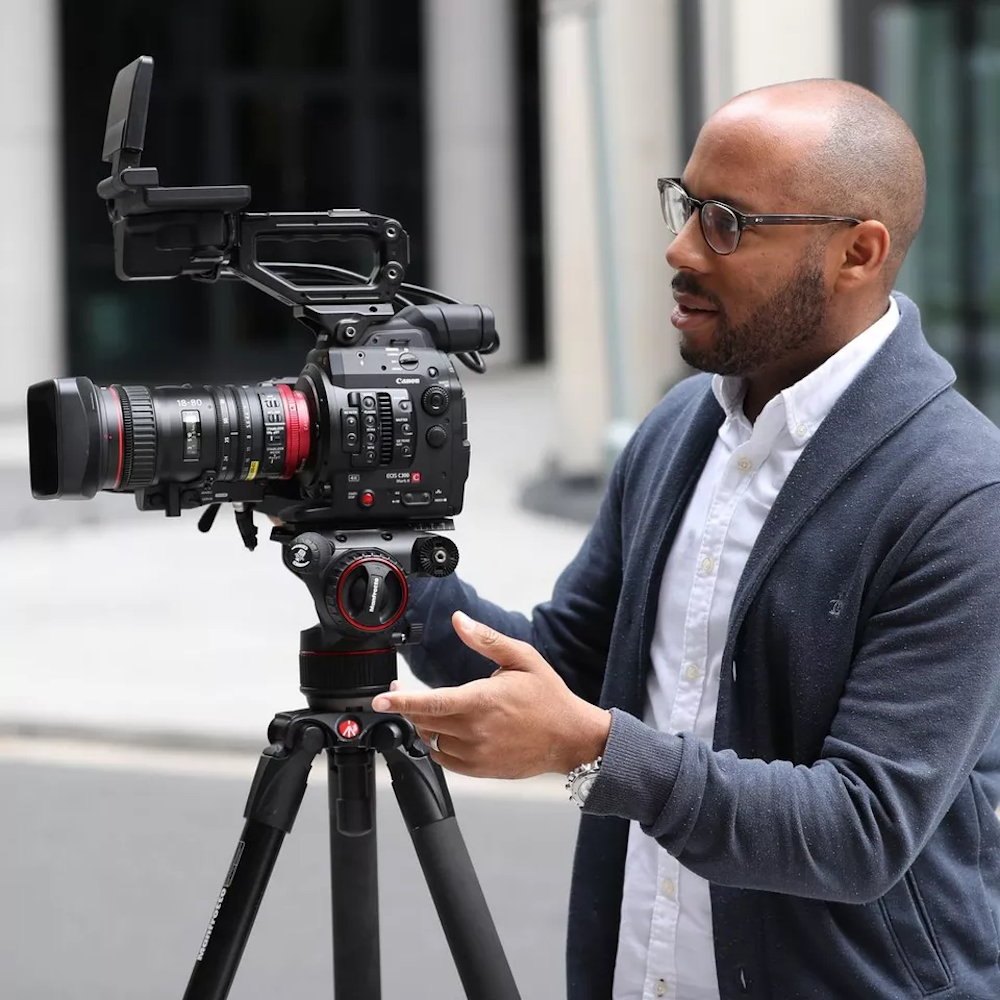Ahead of World Storytelling Day on 20 March 2022, Canon Ambassadors – top photographers and filmmakers – have shared their predictions for the future of visual storytelling over the next decade in a new video released by Canon Europe.
Leading international photographers and videographers – including award-winning photojournalist and New York Times contributor Ivor Prickett and two-time Pulitzer Prize winning photojournalist Muhammed Muheisen – have given their expert predictions set to shape the future of visual storytelling.
Acclaimed portrait photographer Guia Besana states that storytelling ‘will change a lot through new generations’, so what does the future hold for visual storytelling in a more technological and politically charged world?
You can view the video of the Canon Ambassadors on The Future of Storytelling below…
Viewer-led storytelling in an interactive world
The predictions include that AI and AR technology will be central to the emergence of ‘viewer-led storytelling’, with audiences demanding greater control over content viewpoints.
Within the next decade, we could be at a point where viewers will be able to take control of how they view an image, from adjusting lighting or changing camera angles, for an entirely interactive and personalised experience.
Commenting on this trend, celebrated filmmaker Simeon Quarrie, who uses the power of moving and still imagery to create immersive storytelling experiences, said, ‘Social media algorithms decide which stories you see based on your viewing history, but the algorithm of the future will dictate the structure of the story that you watch.’

Filmmaker and Canon Ambassador, Simeon Quarrie
Muhammed Muheisen agreed and said, ‘The tools are changing, technology is taking over. Social media is all over the place. It’s like a train that moves so fast, and you’d better be side-by-side with it, or you will spend ten years trying to catch up.’
Technology as a tool
Technology is no longer a passive tool used to virtually follow the lives of others. Increasingly, storytellers are looking to create an interactive experience.
Simeon Quarrie stated, ‘Imagine watching a movie or a TV series. The shot and the composition remain structured, however the visuals inside the story change.’
This trend is already informing how viewers engage with content, with the recent announcement by a major streaming platform to release at least one interactive title every three months.
Media analyst Kevin Tran at Variety sees this as a targeted approach to engage audiences in compelling ways across an increasingly competitive media landscape, citing how ‘Cat Burglar’ Spotlights Aims of Netflix’s Interactive Push.
The democratisation of storytelling
Portrait photographer Guia Besana, whose work focuses on women’s issues and identity, believes that over the next 10 years, ‘storytelling will embrace a broader knowledge. It will bring new stories with new points of views.’
Working in both photography and video, Denmark-based Laura Bisgaard Krogh has produced a series of long-term solo and collaborative projects.

Canon Ambassador Laura Bisgaard Krogh
The proliferation of social media means that regional stories have increased relevance and significance on a global scale, as Laura Bishggaard Krogh pointed out, ‘[We should] tell stories that are really important. For us to do so, everyone has to be involved.’
As imaging technology and social media become more accessible, more local stories can go global. Muhammed Muheisen noted, ‘Technology makes it possible for me personally to reach millions of people within seconds through social media.’
As we look to the future, we anticipate a growth in the appetite for visual stories that cross geographical borders.
This is highlighted by the fact that 50% of streaming content for European markets is expected to be non-English language programming by 2030, according to leading analytics firm Digital-i, as reported on the DEADLINE website.
This emphasises the demand for stories outside of viewers’ culture and customs.
Digital fatigue & the power of print
Whilst we live in an increasingly digitised world, Canon’s Ambassadors predict that the power of print will have a role to play in support of the visual storytelling experience due to the emotional connection it brings.
Tasneem Alsultan is a photojournalist who focuses on documenting gender and social issues in Saudi Arabia and the Middle East (see lead image of this story).

Canon Ambassador Tasneem Alsultan
She believes that explorations of humanity allow storytellers to cut through the digital noise, or as Alsultan puts it, we make space for things that ‘trigger feelings.’
Alsultan said she doesn’t ‘see print dying anytime soon’, due to the intrinsic beauty and nostalgia it inspires.
Instead, digital and print will continue to co-exist in harmony to create an emotive experience across physical and virtual spaces, that can make us all storytellers.
About the Canon Ambassadors Programme
The Canon Ambassador Programme brings together some of the world’s best photographers and videographers from across the EMEA regions to share stories that resonate around the world.
Related articles:
Ambassadors’ Choice: Canon photographers pick their favourite lenses








